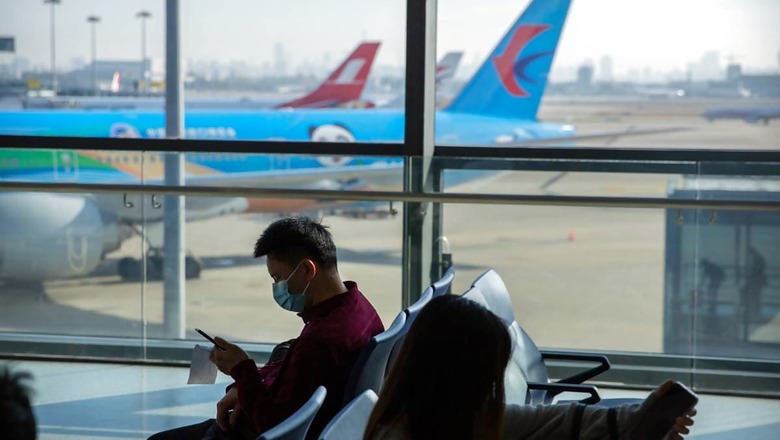
views
Airlines have been operating fully after the global lockdown has lifted amidst the increasing cases of Covid-19. Even though there is a risk of exposure to the coronavirus, people are still traveling as per their requirements. In the beginning of the pandemic, the outbreak of the Covid-19 was escalated by the infected people who travelled through flights and it further spread to other parts of the world.
According to the CDC, travel increases the risk of infection and spreads Covid-19. However, studies are not able to give a proper answer yet on the exact percentage of the transmission on airplanes. But the chance of infection in an enclosed space is higher than that in an open space, as per recent researches.
According to the CDC director Dr Robert Redfield, the latest surge of the Covid-19 cases is by the asymptomatic infections. So, safety checks at the airport won’t be able to detect the Covid-19 infected person without any obvious symptoms like fever or cough.
As per Joseph Allen of Harvard T.H. Chan School of Public Health, airplanes have an excellent safety record in terms of infectious disease as the air people breathe in is filtered. The air in most planes use 50 percent of outdoor air and another 50 percent of recirculated air through HEPA filters.
Major commercial jets have high-quality ventilation systems with HEPA filters, capable of removing 99.97% of dust, pollen, bacteria and other airborne particles of tiny sizes of 0.3 microns. Covid-19 is said to be in between 0.06 to 1.4 microns. So if the ventilation system is working properly and everyone on board is masked, then the risk of infection is reduced.
Some of the ways to reduce the risk of infection on planes
Fly short distances
The amount of time you are exposed to the virus is directly proportional to the chance of infection. It means the longer the time period of your flight, the risk of transmission is more. So, if your travel time is about 5 hours, go for connecting flights where you will be able to change your flight to exposed to fresh air.
Plan your trip to the airport
Make sure your driver or your family who is dropping you wears a mask. And roll down your windows to have an open airflow to reduce the risk from the airborne transmission.
Wear a mask properly for the entire journey
Wear a mask that covers your mouth and nose. Make sure it fits you properly. Better get a three-ply mask with good quality to wear throughout the flight.
Use a face shield
Associate professor of Emory University School of Medicine, Dr. Henry Wu told said, “If you have a higher risk, add a face shield over the face mask.”
Carry the necessary items
Don’t forget to carry disinfecting wipes and hand sanitizer. Use the sanitizing wipes on your seat, arm-rest, and seat belt. Carry your own neck pillow and blanket.
Try to remain seated
Getting up and moving around in the plane can make you closer to others on the plane and the bathrooms are more risker.
Quarantine upon arrival
Make sure to quarantine for a week and a half after you arrive to assure the safety of yourself and others.
Read all the Latest News, Breaking News and Coronavirus News here




















Comments
0 comment